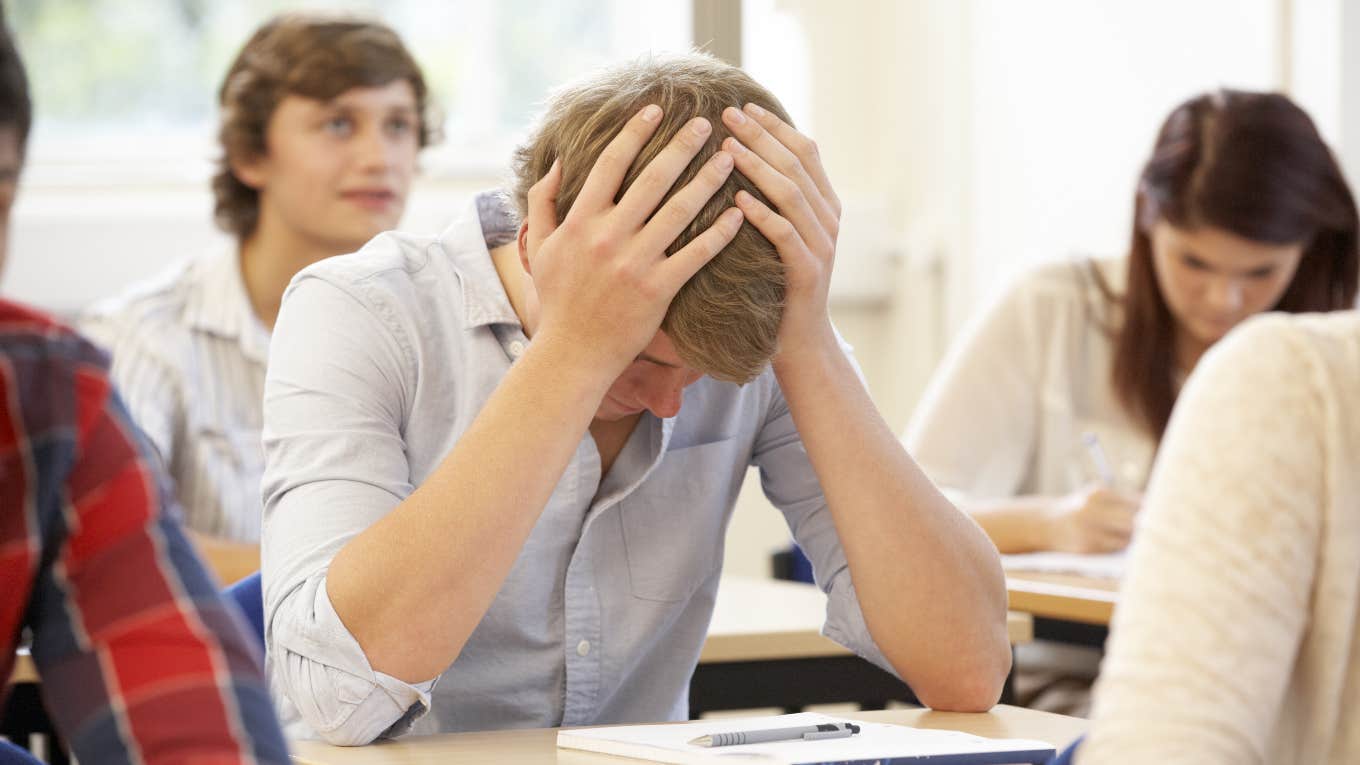Teacher Says Inclusion Is Ruining Education — 'It's Discriminatory To Pass Kids Without The Skills Needed To Succeed'
One teacher thinks classrooms filled with students of varying abilities are "a complete and utter failure."
 Monkey Business Images / Shutterstock
Monkey Business Images / Shutterstock If there’s one thing that is clear about schools right now, it’s that students and teachers are struggling. But what teachers blame for these troubles ranges from new parenting techniques to unsupportive administration and now inclusion.
One teacher claimed that inclusion is 'the worst thing to have happened to education.'
An anonymous teacher on Reddit told readers to “get ready for a rant” before she offered her opinions about inclusion in the classroom.
“Differentiation. Inclusion. Call it what you will — it is a complete and utter failure,” she said. “It has made it impossible for me to do my job. It is the reason we are failing kids. It is the reason we are burning out.”
She argued, “Nobody is benefitting under this model. Not our low kids, not our average kids, not our high kids. And definitely not our teachers. We are running teachers into the ground and expecting good results.”
The Reddit poster explained that she is an eighth-grade English teacher but often feels like she is doing far more than her job description entails. “Somehow, planning for one class has turned into planning multiple different lessons to be delivered simultaneously,” she said.
“The reality is that I am teaching kids who are working at grade level,” she shared. “I am teaching kids who are reading and writing at a high school level. I am teaching kids who are working below grade level because they may have a learning disability or developmental delays.”
She argued that all students should not be placed in the same class just because they are the same age. In fact, she said this is detrimental to educational development.
“It’s discriminatory to have … everyone in the same room together because they are the same age and expect them to thrive without proper support,” she stated. “Even with adequate funding, I still don’t see how this model can be successful.”
“Is everyone accessing a quality education when they are dumped in the same classroom together where nobody’s needs are being met?” she questioned.
It’s true that many students are not performing at grade level.
One of this teacher’s concerns was that students in her class were not up to grade level standards and therefore behind their peers, meaning they needed lessons individually tailored to them. She felt like she could not provide those.
Evidence shows this is true. The Institute of Education Sciences School Pulse Panel found, “Public schools reported that 36% of their students on average were behind grade level prior to the pandemic. At the beginning of both the 2021-22 and 2022-23 school years, public schools reported, on average, half of their students were behind grade level.”
As the quote implied, the decline in student performance has largely been blamed on the COVID-19 pandemic. Although we are several years out from the pandemic at this point, it is still affecting students and their abilities.
McKinsey and Company reported, “Our analysis shows that the impact of the pandemic on K-12 student learning was significant, leaving students on average five months behind in mathematics and four months behind in reading by the end of the school year.”
As students continue to struggle following the pandemic, some are falling farther and farther behind. According to this teacher, the solution is not to have all students in the same grade grouped together for learning but instead to group students by learning performance and abilities. This is an interesting, radical approach that will surely be controversial to many.
Mary-Faith Martinez is a writer for YourTango who covers entertainment, news, and human interest topics.

